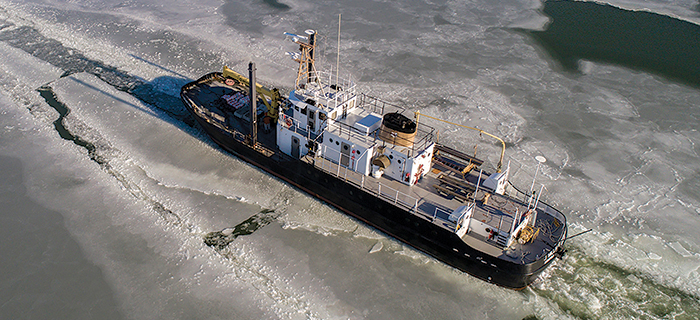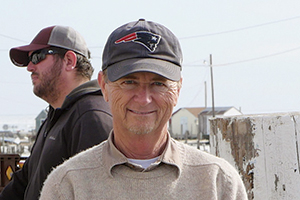From the Field: Captain Eddie Somers

J. Millard Tawes; by Jay Fleming
When Eddie Somers was about seven years old, he saw a large boat approaching his native Smith Island. It was the U.S. Coast Guard buoy tender Barberry, there to remove a navigational beacon.
“Boy, that thing looked big to me then,” Somers says. He spent his life surrounded by watercraft and knew he’d work the water one day, but he was fascinated by the imposing 100-foot vessel.
What he didn’t know was that a few years later, the Barberry would be purchased by the Maryland Department of Natural Resources and renamed the J. Millard Tawes. Or that a few decades later, he would begin a quarter century service as its captain.

Capt. Somers
In those years, Somers piloted the World War II era vessel out of Crisfield Harbor and throughout the Chesapeake Bay, keeping the waterways of the lower Eastern Shore safe and navigable.
Somers and his crew have sailed the Tawes to deliver markers and buoys that identify boating channels, rope off oyster sanctuaries and otherwise guide vessels to safety.
But it’s the boat’s wintertime duty that Somers has enjoyed the most. Almost every year, ice builds up on the surface of Tangier Sound, making access to and from Smith Island impossible without something to break the ice.
On those coldest of days when even rolling, brackish water freezes, Somers has steered the J. Millard Tawes on a path right through the ice, clearing the way for tailing boats full of food, heating oil, mail, schoolchildren and anything else that needs to get from island to mainland and back again.
Somers’ veteran skill, calm demeanor and smooth voice emanating from the bridge radio has been a steadying presence for the Crisfield and Smith Island water route for two generations.
Like many people who grew up on Smith Island, Somers began working young in the fishing trade, culling crabs and later becoming a commercial waterman. After several years, a few other jobs and a move to the mainland for his wife’s job as a nurse, Somers took a job with the Department of Natural Resources, as a conservation associate working with the seed and shell oyster program on Deal Island.
“When I went to work for the state, my goal was to be captain of a boat,” he said, noting he already had a captain’s license from a previous job. “I was (at Deal Island) a year when a job opened on the Tawes at Crisfield. The money was not good, but I talked to my wife and we decided to take the gamble.”
Within five years the entire Tawes crew retired, and Somers was quickly promoted from sailor to mate to captain. And there he stayed, in the bridge of the boat he saw as a youth until his retirement this past fall.
“I couldn’t have asked for better,” Somers says. “I feel blessed.”
His advice to anyone who might want to follow his career path: “Start young, take courses, and get on a boat and work year ’round. There’s nothing like good experience on the water.”
Somers is now concerning himself with the future of his beloved Smith Island. He’s president of Smith Island United, an organization representing the island’s needs to the county, state and federal governments. He’s on the front line of addressing the island’s issues of erosion and rising seas, helping assure projects like ongoing living shoreline and jetty protection continue.
Somers also has begun another career, building models of wooden work boats, of which he makes 12 to 14 a year for clients, providing him an outlet for “talking about the culture of the Chesapeake Bay.”
And without question, Captain Eddie Somers has carved his own place in that story.
Article by Gregg Bortz—Office of Communications chief public information officer. Appears in Vol. 22, No. 1 of the Maryland Natural Resource magazine, winter 2019.


 1-888-373-7888
1-888-373-7888 233733
233733